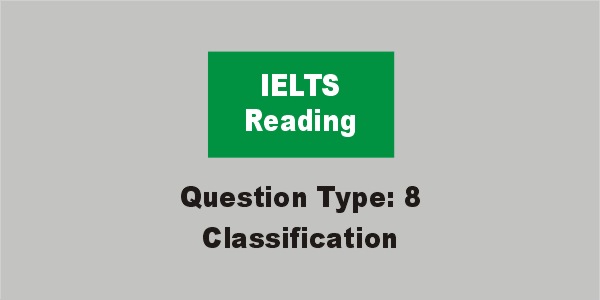IELTS Reading Question Type (8) Classification
NeoTips for Matching and classification
The main difference between a matching and classification question is that in matching, some headings are not matched but in classification all headings are matched. In classification, you need to focus on what, when, where and who.
Read the text below and match each statement with the correct person.
A. He criticized another historian's work.
B. He spoke to people who were actually present at an event.
C. He wrote about many aspects of an event.
D. He went to many places to collect information.
E. He concentrated on the reasons events happened.
1 Herodotus
2 Cicero
3 Thucydides
Text 1
Herodotus had a profound effect on the way we
write history. Born in 484 BC and eventually dying approximately 60 years
later, he was the first historian to apply something resembling a modern
historical technique of data collection, in contrast to the fanciful myths
and legends of previous generations. His work on the Greco-Persian wars, the
first of which took place in 490 BC, involved extensive travelling, although
historians from Cicero (106-43 BC) onwards have cast doubt on a number of his
claims. Another historian with a claim to the same title is Thucydides, 25
years his junior. While Herodotus included a vast range of information in his
accounts, Thucydides attempted to be scientific and to focus on causes and
effects. His use of original documentation and accounts from eyewitnesses
gives his history of the first 20 years of the Peloponnesian War between
Athens and Sparta (431-404 BC) a distinctly modern feel.
|
A before the birth of Herodotus
B during the life of Herodotus
C after the death of Herodotus
1 Greece and Persia go to war for the first time.
2 Historians criticize Herodotus' accounts.
3 Thucydides is born.
4 War breaks out between Athens and Sparta.
Read Text 2. Concentrate on what the text says about these places. Then match each place with the correct statement.
1 Catalhoyuk _______
2 Ban Chiang _______
3 Tell Hammeh _____
A People lived here for at least a thousand years.
B People here were unable to defend themselves against attack.
C Products from here were more affordable than bronze.
D People here produced metal that had no use in weapons.
Text 2
The change from stone tools and weapons to
bronze tools and weapons was undeniably an enormous shift in human history.
At what is unarguably the best-preserved Neolithic site, Catalhoyuk in
Turkey, there is evidence from 8.500 years ago of the deliberate casting of
lead, which was a relatively common metal but too soft to take a sharp edge.
For that you need an alloy of copper - bronze. Ban Chiang in Thailand is an
important site where bronze casting has been dated to 2000 BC, although some
experts argue for an earlier date. Human habitation of the site continued
into the Iron Age, at which time iron, a softer but cheaper metal than
bronze, was being produced in places such as Tell Hammeh in Jordan, where
extensive evidence has been uncovered dating to approximately 1000 BC. The
precise boundaries of the period are open to challenge, but bronze
undoubtedly ruled the world for at least a millennium.
|
Read Text 2 again. Classify the following statements according to the information.
A a generally accepted view
B a disputed view
C a generally rejected view
1 The beginning of the Bronze Age was a key moment.
2 Catalhoyuk is the best example of its kind in the world.
3 The people of Catalhoyuk produced metal by accident.
4 Bronze was produced in Ban Chiang more than 4,000 years ago.
5 The Bronze Age began in 2000 BC and lasted until 1000 BC.
Subscribe to:
Post Comments
(
Atom
)

CHECK YOUR ANSWERS:
ReplyDelete1D 2A 3A 4A 5C
...
1A 2C 3B 4B
...
1D 2A 3C
...
1A 2A 3C 4B 5B
10 only
DeleteI managed to get 11 correct answers but in 1st part there are 3 questions instead of 5 I think. Answer key has 5 answers of 1st part...
DeleteI got 9 marks.
ReplyDeleteI managed to get 11 correct answers but in 1st part there are 3 questions instead of 5 I think. Answer key has 5 answers of 1st part...
ReplyDelete